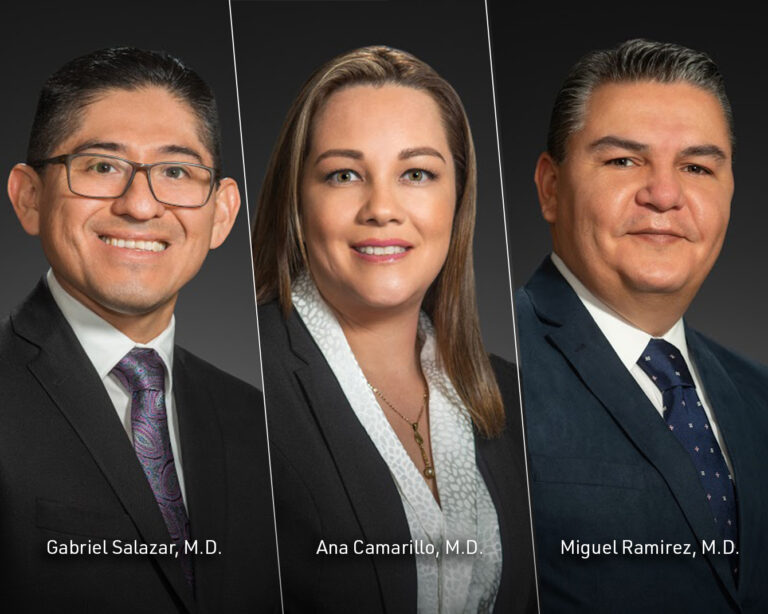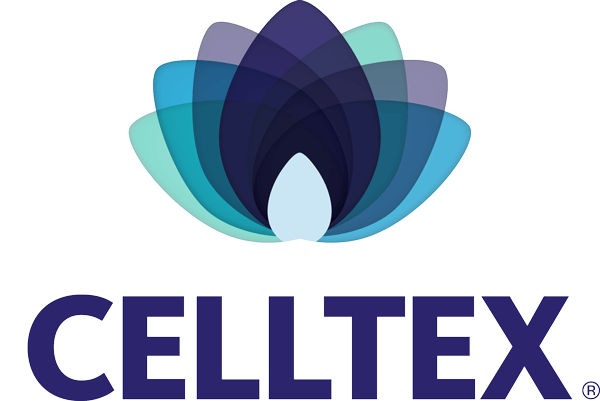Celltex News
Physician Panel on Stem Cell Therapy: Advanced Techniques in Regenerative Medicine

To kick off 2024, Celltex hosted a webinar focused on stem cell therapy to offer a clear picture of the process and how it may apply to particular medical conditions and wellness needs. The panel of guest speakers included esteemed, licensed physicians at Hospital Galenia in Cancun who have been working with Celltex Mexico for over a decade and who have extensive experience in regenerative medicine:
- Dr. Gabriel Salazar – Emergency Medicine Surgeon, Administering Physician at Hospital Galenia
- Dr. Ana Camarillo – Medical Surgeon, Administering Physician at Hospital Galenia
- Dr. Miguel Ramirez – Orthopedic Surgeon, Administering Physician at Hospital Galenia
In this article, we’ll describe some of the key details from the panel discussion, specifically relating to the stem cell therapy process, its many clinical applications, and an in-depth look at several advanced regenerative medicine techniques.
Why Stem Cell Therapy and MSCs?
Paul Newhouse, Celltex’s Assistant Vice President of Client Services and webinar host, began the discussion by providing a reminder of the type of stem cells Celltex primarily works with:
“In Celltex’s case, we’re talking about stem cells harvested from your own body, a specific type of stem cell known as the Mesenchymal Stem Cell, or MSC.”
In terms of protocol, Celltex takes a small sample of adipose (fat) tissue, isolates the MSCs, and then cultures the cells to hundreds of millions in quantity in its own FDA and cGMP-compliant lab.
But why MSCs? Why MSCs harvested from your own adipose tissue? Celltex works with this type of stem cell for many reasons:
- Autologous: when using stem cells that came from your own body, there is virtually no risk of rejection.
- Adipose-derived: fat tissue is significantly easier to obtain, and yields more MSCs, than other tissue sources like bone marrow.
- Powerful properties of MSCs: In addition to their differentiation capabilities, MSCs, specifically, produce several biologically active molecules that help support the growth, survival, and function of other cells in the body.
With these benefits in mind, the physician panel discussed their personal experience administering stem cell therapy and the impressive results they’ve seen.
What Conditions Are Stem Cells Used For?
When the physician panel was asked about the various conditions MSCs may help with, Dr. Ana Camarillo began by stating, “Our main conditions are patients with osteoarthritis, but we’ve also seen patients with inflammatory arthritis and other autoimmune conditions.” She added that, over the years, the physicians in Cancun have also seen favorable results in other areas, including “neurological conditions, anti-aging, injuries, and surgical recovery.”
Moreover, the panel noted that stem cell therapy is an excellent preventive health tool. Dr. Salazar eagerly shared, “[Almost] every condition holds a common root or path—inflammation.” He emphasized that stem cell therapy can help us address this inflammation, especially as we age, making it a great option for prevention and wellness.
Osteoarthritis (OA) and Other Orthopedic Conditions
As an orthopedic surgeon, Dr. Ramirez offered his thoughts on using MSCs to alleviate symptoms of osteoarthritis. He stated that when he began working with Celltex Mexico, he was “in shock” at the promising results he witnessed. For years, his medical studies had been rooted in the principle that joint cartilage was lost forever once eroded by wear and tear. Yet, during his experience with stem cell injections, Dr. Ramirez recalled seeing “[improvements in] cartilage thickness under an MRI” for certain patients.
Conventional osteoarthritis treatments, such as pain medications and cortisone injections, attempt to mitigate symptoms and reduce joint pain, but the OA-afflicted joint still may deteriorate to the point that replacement surgery becomes unavoidable. Optimistically, Dr. Ramirez stated, “With stem cell therapy, patients may not need a joint replacement.” Of course, he cautioned that—as with any condition—results can vary depending on the stage of progression: “If the body does not have the scaffolding for the cells to build upon, you cannot get it back. But if there is a trace of it, [the cells] can help repair.”
Anti-Aging and Aesthetic Medicine
Switching focus, the panel was asked about the potential of MSCs for aesthetic and anti-aging purposes. As a physician with extensive experience in non-surgical cosmetic procedures, Dr. Camarillo led the discussion and explained the use of intradermal (injection) and intravenous (IV infusion) stem cell therapies to help one achieve different anti-aging goals.
She first described using MSCs as an aesthetic booster, “There’s a mesh between the skin and your facial muscles built by collagen tissue. So, when you [inject] the stem cells in there, it’s like you’re giving this mesh more structure. It’s a good option for patients looking to boost skin treatment without the invasiveness or high cost of plastic surgery.”
Dr. Camarillo also has experience in the intravenous administration of stem cell therapy, which also has the potential for anti-aging and general wellness benefits. She added that administering stem cells both intravenously and intradermally can help “rejuvenate the skin by improving collagen and elastin production and increasing blood flow to the skin.”

Stem Cell Therapy Techniques: Routes of Administration
One topic that sparked thoughtful discussion during the webinar was the different routes of stem cell therapy administration. Depending on one’s medical condition or health goal, there are several methods by which a physician may deliver MSCs into the body.
Intravenous Infusion (IV)
This method of administration utilizes a typical IV infusion setup and is used for a range of systemic disorders and general wellness.
In the discussion, Dr. Salazar stated, “I think [the IV infusion] is the foundation of every type of stem cell therapy plan, whether for aesthetic purposes or neurological, autoimmune, or degenerative conditions.” He also explained that IV infusions can be beneficial for subclinical purposes. For example, someone might be healthy and not show signs of any condition. However, there could be an issue developing below the surface. Stem cells may pick up on the signaling from a damaged organ, and it will receive the help it needs.
Dr. Salazar added, “When stem cells are infused intravenously, they will target [areas of] inflammation.” The process is called homing—when MSCs migrate to injured areas and secrete growth factors that help with tissue regeneration or repair. He also reveals that this protocol has shown significant results in patients with post-COVID syndrome.
Intranasal Infusion (IN)
This method of administration allows for stem cells to reach the brain. Stem cells are infused through the nasal passageway, crossing through the olfactory ways straight to the brain, avoiding the blood-brain barrier. This protocol is used to target neurological issues like Parkinson’s disease.
Additionally, patients with post-COVID symptoms such as brain fog and respiratory issues have seen “great results with the stem cells, not only through IV but with the intranasal procedure as well,” according to Dr. Salazar.
Dr. Camarillo added, “Over the years, we noticed that healthy patients receiving intranasal delivery also referred to an improvement in cognitive functions, like attention, memory, and mental stress.” Thus, physicians may recommend stem cells via the intranasal route for those seeking to maintain cognitive function as they age.
Intraarticular Injection (IA)
As discussed in the webinar, stem cell therapy may be delivered through direct injection to an injured or arthritic joint.
Dr. Ramirez explained that this method may be used for those with “osteoarthritis, joint degeneration, a fracture, or any other joint trauma.” In the example of a joint injury, he emphasized the importance of “restoring the joint environment” soon after the injury to help encourage functionality “five, ten, or fifteen years down the road.”
Intradiscal Injection (IDISC)
This method of administration may be recommended to address pain in the cervical or lumbar spine. As Dr. Ramirez noted, the procedure works very similarly to an intraarticular injection but “happens in your back” instead. Dr. Ramirez went on to explain how the procedure works: “We deliver the cells specifically to the outer boundaries of the disc to provide the anti-inflammatory and regenerative effects.”
Other advanced administration techniques discussed included:
Intrathecal Injection (IT): This method of administration involves a direct injection of MSCs into the cerebrospinal fluid. A physician may recommend an intrathecal injection for those with neurological conditions (like ALS and MS) or spinal injuries.
Nebulizer Infusion (NEB): This is a relatively new technique comparable to an albuterol nebulizer approach—but with stem cells. It is designed to address certain respiratory conditions such as COPD, chronic allergies, and patients with post-COVID chronic lung issues. Dr. Salazar recalled the experience of one patient who needed supplemental oxygen and “after a round of three treatments in a year, he was able to get rid of the [supplemental] oxygen for at least one or two years.”
The Celltex Difference and A Personalized Approach
As the webinar concluded, the physician panel explained what sets Celltex apart from others in regenerative medicine. Perhaps the most significant difference is the quantity of MSCs made available through Celltex’s stem cell banking and culturing process. Dr. Salazar explained that with other (same day) stem cell therapy options, “you never receive more than 250 thousand” MSCs. By comparison, Celltex can multiply one’s MSCs into the hundreds of millions. That difference in quantity greatly increases the potential for positive results.
Furthermore, the team agreed that they, along with the rest of the Hospital Galenia team, have made it a priority to work closely with their patients to explain exactly what an individualized treatment plan may include.
“You’ll be hand in hand with us [the physicians]. We’ll tell you what’s going on, what we’re going to do, and what to expect,” added Dr. Ramirez.
The team at Hospital Galenia works with each patient, from stem cell collection to administration, to ensure the right protocol is designed for the right condition. The reason? As Dr. Salazar explained, “Every patient is special; every patient is different.”
You can watch the recent webinar on-demand here.
About Celltex
Celltex Therapeutics Corporation is an international leader in cryopreservation, or banking, and culturing of autologous, adipose-derived Mesenchymal Stem Cells (MSCs) for therapeutic use and has remained committed to improving and maintaining clients’ quality of life. Celltex has the unique ability to do what no one else can: isolate, expand, and cryopreserve your own MSCs to create your master cell bank, all from one small sample of your adipose tissue. This bank of MSCs can then be used to produce hundreds of millions of clinical-grade, genetically stable MSCs that are available for therapeutic use. To learn more about Celltex, visit www.celltexbank.com
Post Tags: adult stem cell therapy, celltex team
More Recent News
Exploring Regenerative Medicine Beyond Stem Cell Therapy
For many, stem cell therapy is to regenerative medicine what Google is to internet searches. Yet, there are other procedures within the regenerative medicine field that may be recommended depending on the health concern being addressed.
In this article, we explore several regenerative medicine options, including platelet-rich plasma (PRP), bone marrow aspirate concentrate (BMAC), stromal vascular fraction (SVF), and exosomes.
Read MoreWhat Makes MSCs So Promising? A Deep Dive on Mesenchymal Stem Cells
Present in the body throughout one’s lifespan, adult Mesenchymal Stem Cells (MSCs) can be used in many types of regenerative medicine. This article explores how MSCs work in the body and what makes them suitable for therapeutic application.
Read More
